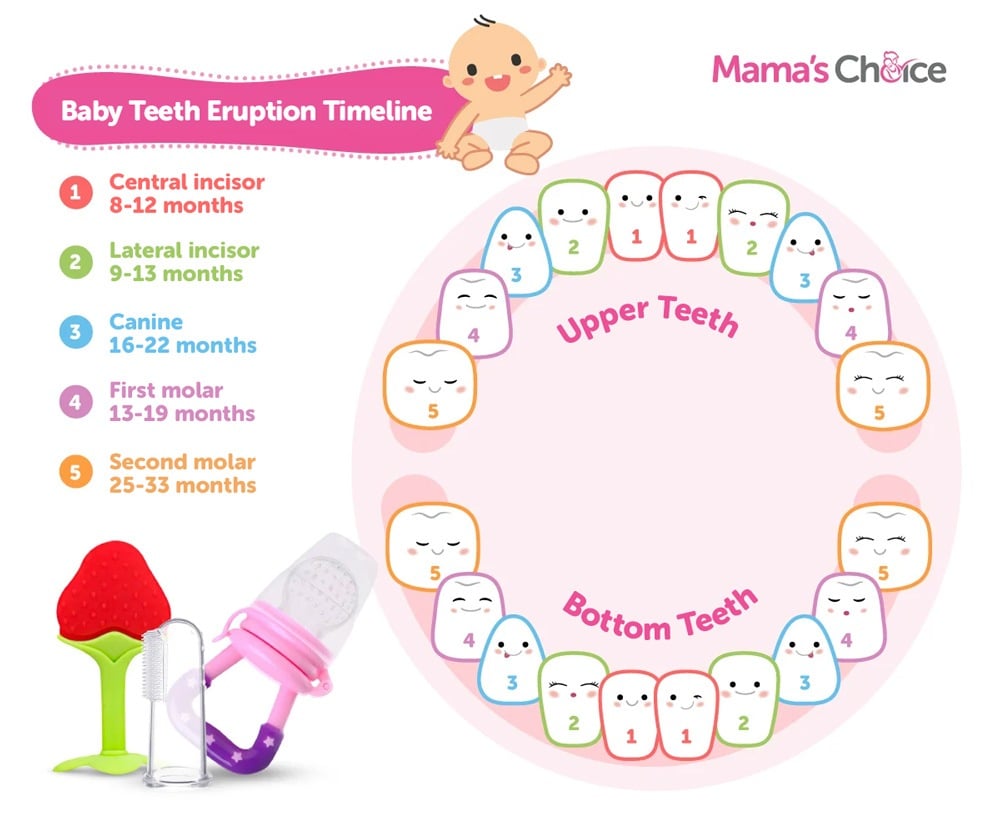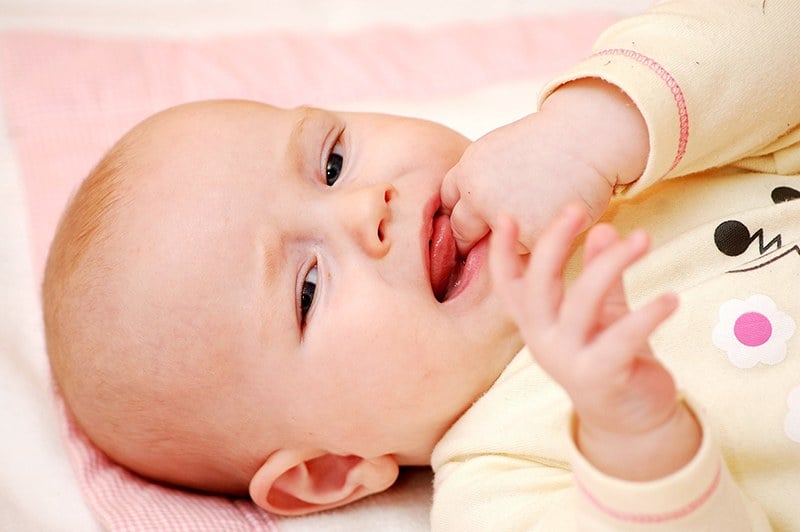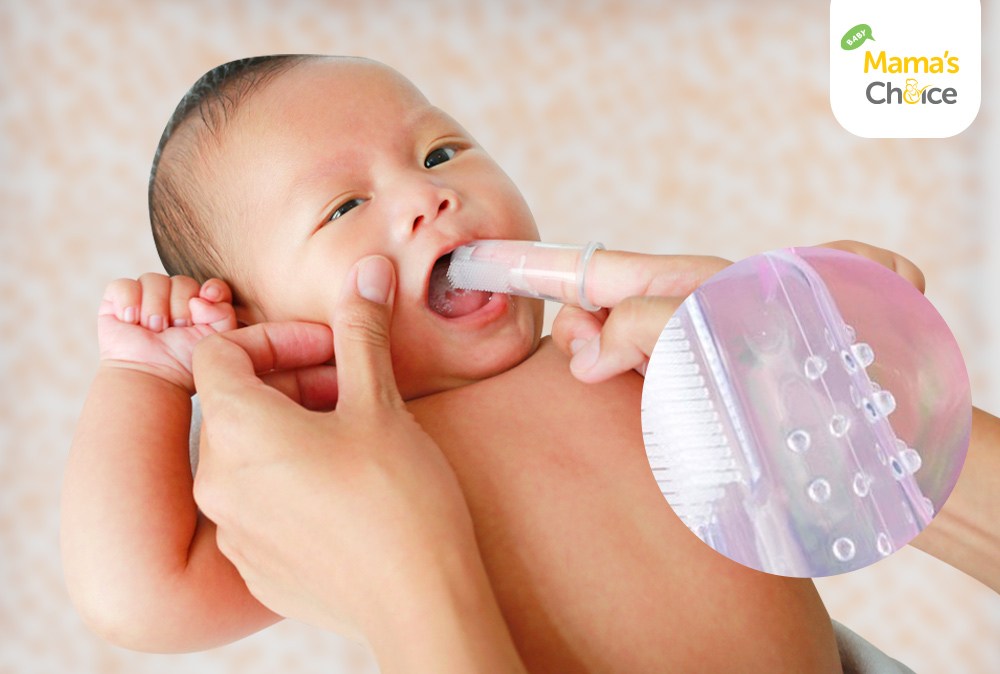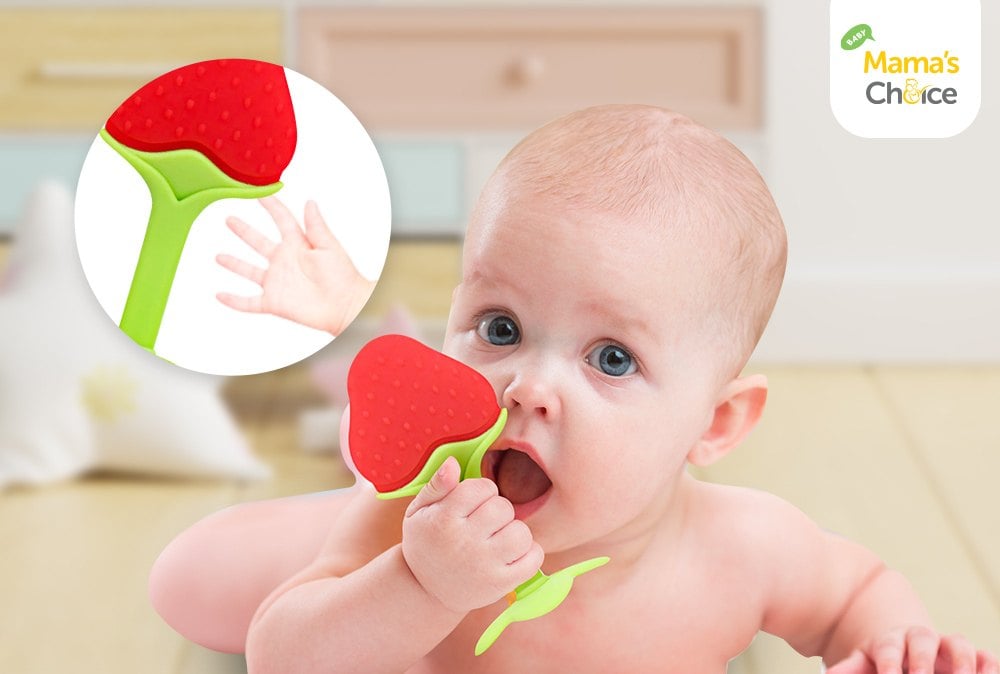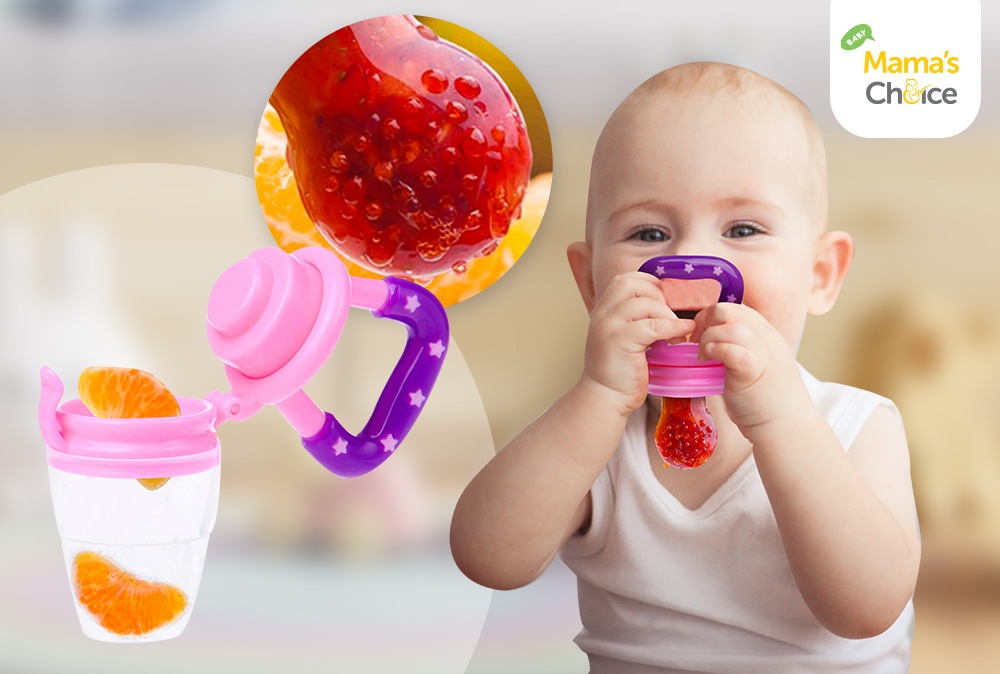How do you know when a baby is teething? How long does teething last in a baby? Keep reading to learn more about babies and teething symptoms.
A baby who is fussy, eating less, and irritable will always drive any mama sick with worry. It’s easy to assume that they have a cold or picked up a serious bug. However, it isn’t always the case. Sometimes, the sudden change in behavior that’s stressing many parents in the world is simply because of teething.
Teething, which is an exciting yet nerve-wracking milestone for any baby, is when a baby’s teeth first come through their gums. It’s an important part of their development, as teeth help your little one chew, speak, and even smile.
How Long Does Teething Last In A Baby?
Teething can begin as early as 3 months, but it usually erupts between 4 and 7 months. The first teeth to come through are usually the central incisors, which are the two teeth at the bottom.
More often than not, teething lasts until about 25 to 33 months. However, Healthline highlights that “teething isn’t officially over until young kids get their permanent molars.” The first set of molars usually erupt around 6 to 7 years of age.
You can refer to our chart below for a quick reference on when you can expect your baby’s teeth to come through.
If you think your child’s teeth eruption is a bit behind, know that it isn’t uncommon. According to Woodhill Dental Specialties, genetics, vitamin deficiencies, low birth weight or premature birth, and developmental disorders can be the reason why your baby’s teeth may be erupting late.
However, MedlinePlus recommends that you consult a pediatric dentist if your baby still has no teeth by 9 months of age.
Babies and Teething Symptoms: 7 Signs To Look Out For
Teething can be uncomfortable for babies. And as much as we wish they could speak to us, it’s our job as mamas to observe them and watch for signs of discomfort or pain. So, how do you know when a baby is teething? Here are the clues!
- Doesn’t seem interested in eating solids. With a tooth coming through, expect a baby’s gums to be swollen or sore. As such, it’s expected that they would refuse to eat.
- Has a slightly raised temperature. While they may be warmer than usual, teething will not cause a fever.
- Drooling a lot. Babies will drool a lot during teething, so make sure you put on a bib or wipe their neck and chin regularly to prevent a rash from developing.
- Fussiness and irritability. Teething can be painful, which can cause irritability and crankiness in your little one. It’s particularly uncomfortable when it’s the first teeth and molars that are erupting!
- Trouble sleeping. Teething knows no time and can be uncomfortable round the clock, which can disrupt your baby’s sleep schedule.
- Gnawing on objects. From the remote control to their favorite toy, teething babies often gnaw on things to relieve their pain. (Also read: Why Do Babies Put Everything In Their Mouths)
- Ear pulling and cheek rubbing. These two can also be a sign of teething in babies, as the pain can spread across the cheeks and ears. However, do note that ear pulling can also be a sign of an ear infection.
If your child is showing these signs, then he/she is probably going through teething. Keep in mind that these signs and symptoms often show on the day before and after a tooth erupts.
How To Soothe A Teething Baby
While teething pains are unavoidable, there are many ways to help your child feel more comfortable during this period. Here are some of the easy ways to soothe your teething baby.
1. Massage your baby’s gums
Massaging the baby’s gums can help soothe the itchiness they feel. You can use a clean finger to do this. Alternatively, you can use a finger toothbrush, which features a soft, ridged surface ideal for rubbing on a baby’s gums.
Besides being great for massaging the gums, it can also be used to clean your baby’s mouth.
2. Give them a teether
Instead of letting your gnaw on random objects that can be full of germs and dangerous, hand them a BPA-free teether so they have something safe to chew on.
Even better, you can place it inside the fridge first. A cool teether provides additional comfort, too!
3. Offer a healthy and cooling treat.
As mentioned above, something cool can help relieve soreness on their gums. If your baby is already eating solids, you can cut fruit and place it inside a fruit feeder.
This method not only soothes their discomfort but ensures they get a nutritious snack, too.
Did you find this article about how long does teething last in a baby helpful? Share with us your other tips and trick in the comment section below!
Mama's Choice Team
A team of passionate writers, young mamas, and creative superheroes who help mamas face motherhood one educational article at a time!

